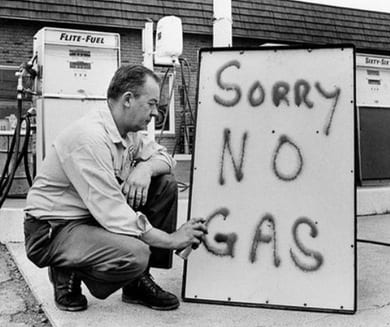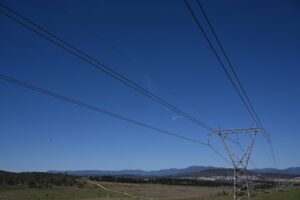The relentless surge of gas prices that are bound to occur as Australia ramps up its new LNG export capacity on the eastern seaboard has barely begun, but already it is having a devastating impact on the country’s electricity markets.
Nearly all major generators are winding back or mothballing capacity in gas-fired generation as the rising cost of gas make gas-fired generators more expensive to run. Baseload gas generation – once hailed as the great “transition” fuel from coal to renewables – is now being priced out of the market.
EnergyAustralia last week admitted writing down the value of some of its gas generators. The 435MW Tallawarra baseload plant in the Illawarra – only opened in 2009 – has been written down by $94 million. The 12-year-old, 203MW Hallett peaking plant in South Australia has been written down by $13 million . As we reported on Friday, the Yallourn brown coal generator has also been written down by $440 million ($300 million net).
It’s not just the rising gas prices that are forcing these write-downs, it is also the record low wholesale prices, caused by falling demand and the impact of renewables. Gas fired generators usually rely on peak pricing events to generate profits, but as EnergyAustralia admitted last week, the recent heatwaves in South Australia and Victoria had failed to deliver those pricing events, probably the result of the impact of wind energy and solar energy.
Meanwhile, Queensland state government-owned Stanwell Corp has closed its major baseload gas generator, the 385MW Swanbank station at Ipswich, for at least three years.
Now, it is speculated, Origin Energy is about to do the same with 630MW Darling Downs baseload gas generator in Queensland, and will likely either mothball the four-year old facility or modify it to a peak-load generator. If it moves to a peaking plant (more likely), it will slash its capacity factor from more than 50 per cent to less than 10 per cent, and only target high pricing events. Analysts say gas supply deals with Santos point to such an event.
It’s not all bad news for those with cheap supply contracts or sources written before the LNG boom, and who can sell some of that capacity on the market.
AGL Energy last week revealed it was selling gas to customers for $10/GJ – already getting towards the top end. It admitted making a hefty margin of $3.50/GJ on the sale. Just a few years ago, $3.50/GJ was the price for gas in the eastern states, not the profit margin.
Stanwell, for instance, is going to make more money by selling the gas that was to be used by Swanbank into the open market. Origin Energy may do the same when and if it moves the Darling Downs generator to either a peaking plant, or mothball it entirely.
“It’s a crazy situation because the gas will be exported to replace coal in China,” one analyst noted. “So coal is burned in Australia to make gas that is shipped to China to replace coal. Of course the process is itself energy intensive.”
It’s also not good for gas users. Miles Prosser, from the Australian Aluminium Council, reportedly told a gas conference last that the industry that it was impossible to negotiate gas supply contracts. “They don’t offer a supply price. They seek the price we could pay before we fail,” he said, warning that large users such as aluminium smelters may risk shutdown.
The situation in energy markets in Australia is broadly comparable to what is happening in Germany, where some 30GW of gas-fired generation has been mothballed or facing closure, even those newly opened. Even in the US, where gas prices are lower, plans for new gas generation have been dumped in favour of large scale solar plants purely on the basis of price, Citigroup has reported.
Solar – and more wind energy – would seem the logical answer in Australia too. As RenewEconomy pointed out in a recent article, even Saudi Arabia, Iran and other Gulf states are responding to high export prices for fossil fuels by seeking to boost the amount of solar and other renewables.
The problem is that Australia has yet to deploy solar on large scale so while the modules themselves are relatively cheap, the installation, finance and maintenance costs are more expensive.
That is unlikely to change until the nexus around renewable energy is broken. Most generators are fighting to reduce the number of renewable energy projects to be built in the country, fearful that continued expansion of wind and solar will make their coal-fired generation uneconomic.
Some already are, as Stanwell reported for the 2012/13 financial year, it was unable to make any money from its more than 4,000MW of coal and gas-fired generation. Perversely, however, the switching on of LNG plants is likely to increase demand, and prices in Queensland, although gas generation will likely continue to be priced out of the market and so it is firing up its two mothballed units at the Tarong black coal generator. In a state with virtually no solar or wind generation, rising prices benefit mostly the coal plants.
So, how is the Abbott government likely to react? Well, given its rhetoric over pricing and green energy, and the make-up of its renewable energy target review panel, it appears beyond hope that it would seek to boost the deployment of renewables, or even to allow the current target to remain.
The problem for Abbott is that rising gas prices will more than offset any of the exaggerated savings he claims from repealing the carbon price. As Queenslanders found out a few months ago, rising gas prices are the biggest component of another 13 per cent jump in electricity bills for 2013/14. That will inevitably flow through to other states. NSW has already announced a 20 per cent jump in prices for gas used in gas appliances.
However, it is not beyond the realms of possibility that the new government will take advice and modify the renewable energy scheme to include gas, which would gain credits (in the form of certificates) that would make it more able to compete with other technologies.
Not so much a “renewable energy target” as a “low emissions energy target.”








